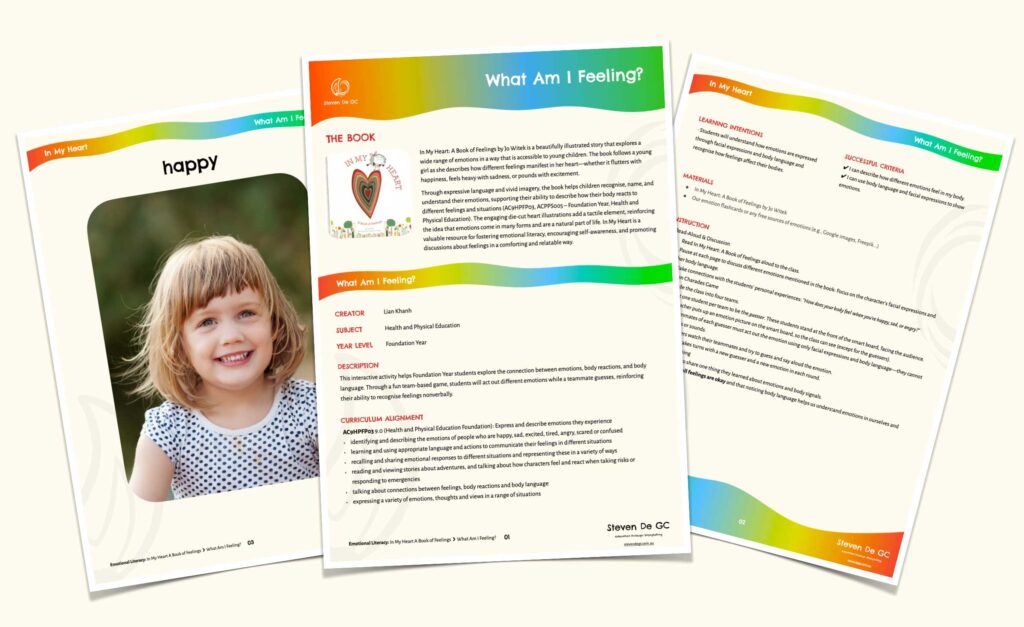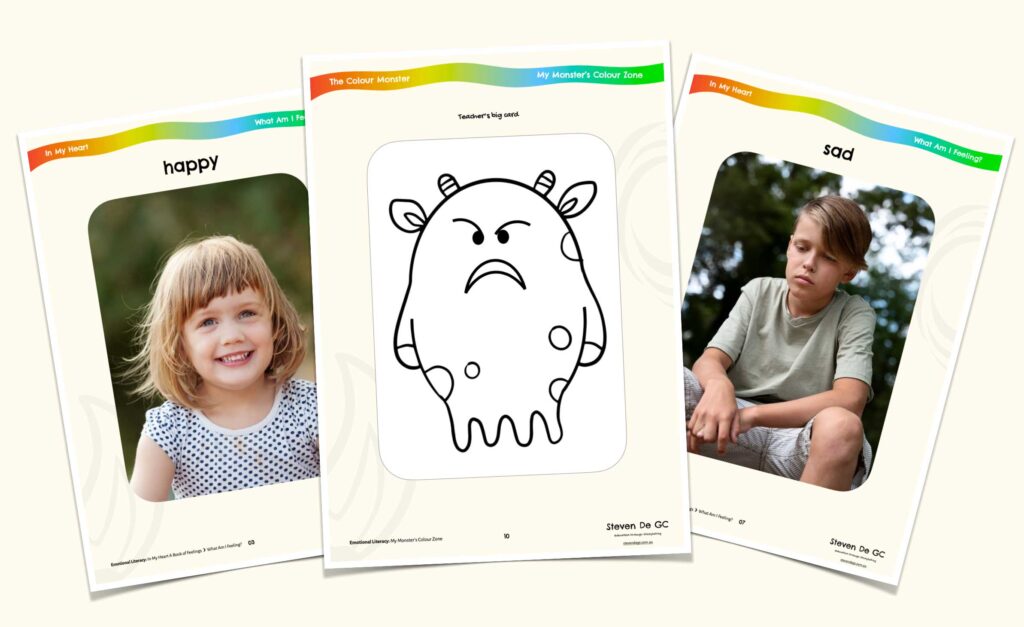Written by Jo Witek, illustrated by Christine Roussey, published by Abrams Appleseed
In My Heart: A Book of Feelings by Jo Witek is a beautifully illustrated story that explores a wide range of emotions in a way that is accessible to young children. The book follows a young girl as she describes how different feelings manifest in her heart—whether it flutters with happiness, feels heavy with sadness, or pounds with excitement.
Through expressive language and vivid imagery, the book helps children recognise, name, and understand their emotions, supporting their ability to describe how their body reacts to different feelings and situations (AC9HPFP03 – Foundation Year, Health and Physical Education). The engaging die-cut heart illustrations add a tactile element, reinforcing the idea that emotions come in many forms and are a natural part of life. In My Heart is a valuable resource for fostering emotional literacy, encouraging self-awareness, and promoting discussions about feelings in a comforting and relatable way.






![[T4R] A Family is a Family is a Family: L2 Making Predictions [T4R] A Family is a Family is a Family: L2 Making Predictions](https://stevendegc.com.au/wp-content/uploads/2025/03/T4R-A-Family-is-a-Family-L2-Cover-1024x626.jpg)

![[T4R] Stay For Dinner: L8 Respectful Relationships [T4R] Stay For Dinner: L8 Respectful Relationships](https://stevendegc.com.au/wp-content/uploads/2025/02/T4R-Stay-For-Dinner-L8-Cover-1024x627.jpg)
![[T4R] Stay For Dinner: L7 Cultural Respect [T4R] Stay For Dinner: L7 Cultural Respect](https://stevendegc.com.au/wp-content/uploads/2025/02/T4R-Stay-For-Dinner-L7-Cover-1024x626.jpg)
![[T4R] Stay For Dinner: L1 Background Knowledge [T4R] Stay For Dinner: L1 Background Knowledge](https://stevendegc.com.au/wp-content/uploads/2025/01/T4R-Stay-For-Dinner-L1-Cover-1.jpg)


Leave a Reply